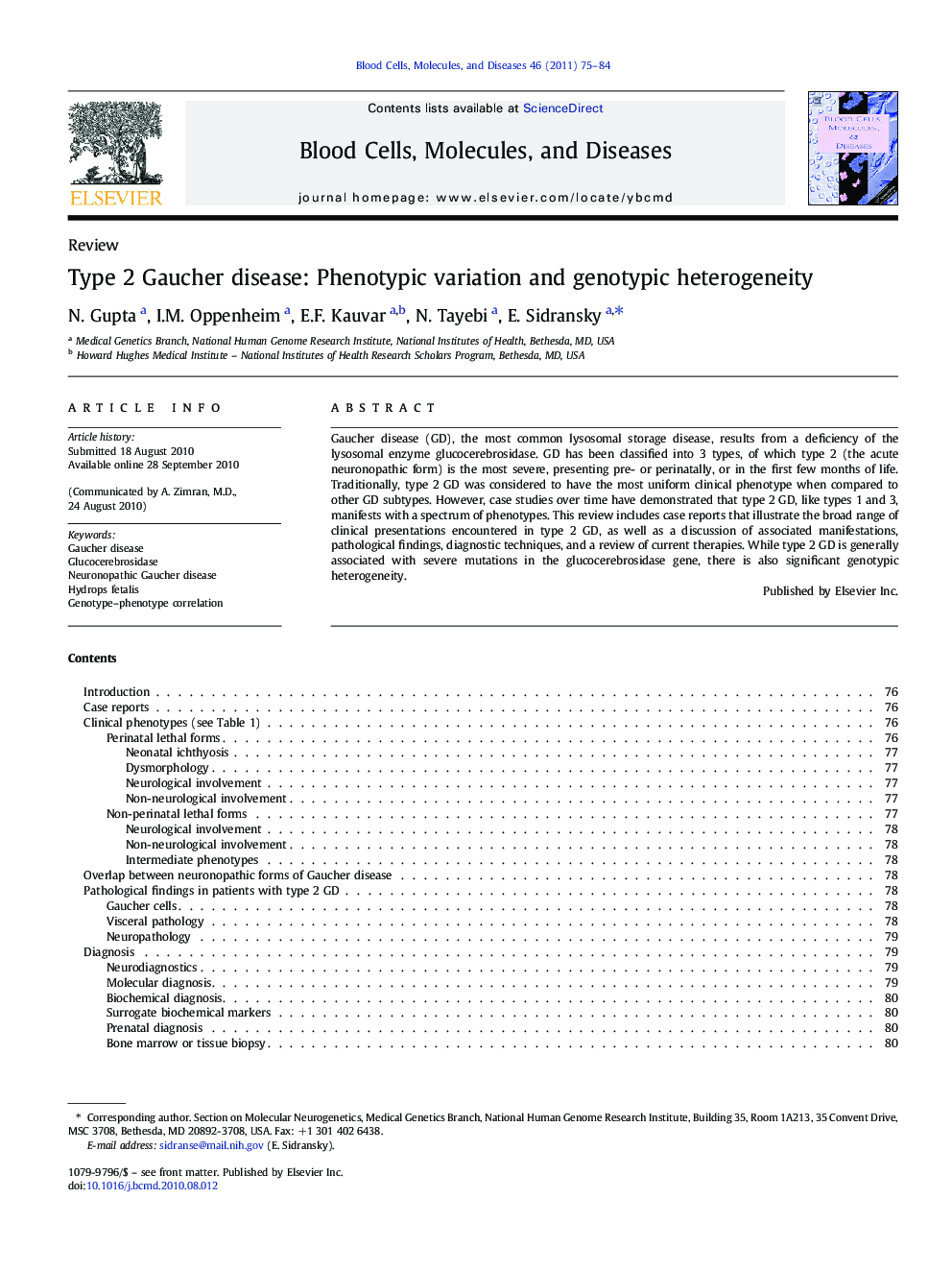| Article ID | Journal | Published Year | Pages | File Type |
|---|---|---|---|---|
| 2827880 | Blood Cells, Molecules, and Diseases | 2011 | 10 Pages |
Gaucher disease (GD), the most common lysosomal storage disease, results from a deficiency of the lysosomal enzyme glucocerebrosidase. GD has been classified into 3 types, of which type 2 (the acute neuronopathic form) is the most severe, presenting pre- or perinatally, or in the first few months of life. Traditionally, type 2 GD was considered to have the most uniform clinical phenotype when compared to other GD subtypes. However, case studies over time have demonstrated that type 2 GD, like types 1 and 3, manifests with a spectrum of phenotypes. This review includes case reports that illustrate the broad range of clinical presentations encountered in type 2 GD, as well as a discussion of associated manifestations, pathological findings, diagnostic techniques, and a review of current therapies. While type 2 GD is generally associated with severe mutations in the glucocerebrosidase gene, there is also significant genotypic heterogeneity.
